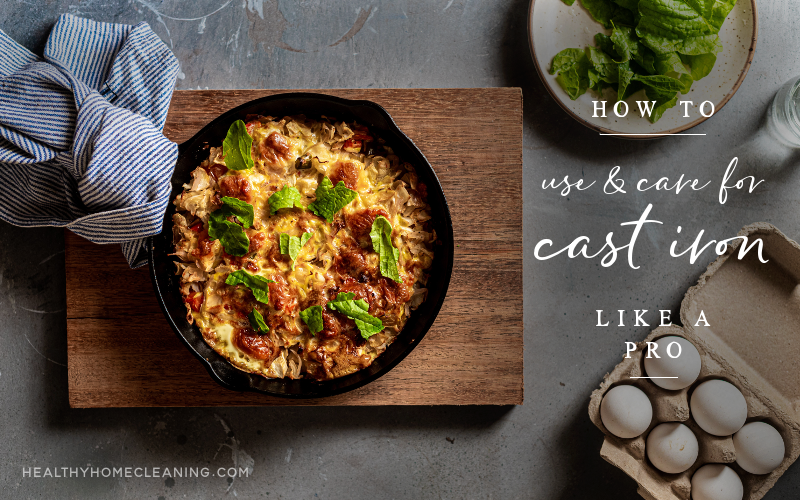
Many years ago, I only cooked with frying pans that had a non-stick coating. My grandmother had always used cast iron pans, but I had always heard that everything sticks to cast iron, so I didn’t bother. I didn’t need that in my life! I would use my non-stick pan for its lifespan, which seemed to be 2-3 years, and just replace it after that time. However, I kept hearing a lot of negative information about the unhealthy side effects of non-stick coatings. I was reluctant to get rid of them though, because I didn’t want to live with a pan that everything stuck to!
BUT – this all changed when a friend told me that she got a SUPER OLD cast iron pan from her grandmother’s basement. It was dirty and rusty. She had heard that it could be brought back to life, re-seasoned, and would even be able to fry eggs on it (that wouldn’t stick!). I was amazed when lo and behold -it worked for her!
This encouraged me to give cast iron pans a try. I purchased a medium size pan. I loved it so much, I eventually added a large pan to my collection. And I have NEVER looked back.
I share this story because I want you to know that YOU TOO can make the switch to cast iron pans! Or perhaps you have some in your cupboard already, but they’ve simply never worked for you, so you’ve never bothered. Or maybe you don’t use them because you feel intimidated with what’s required to care for them.
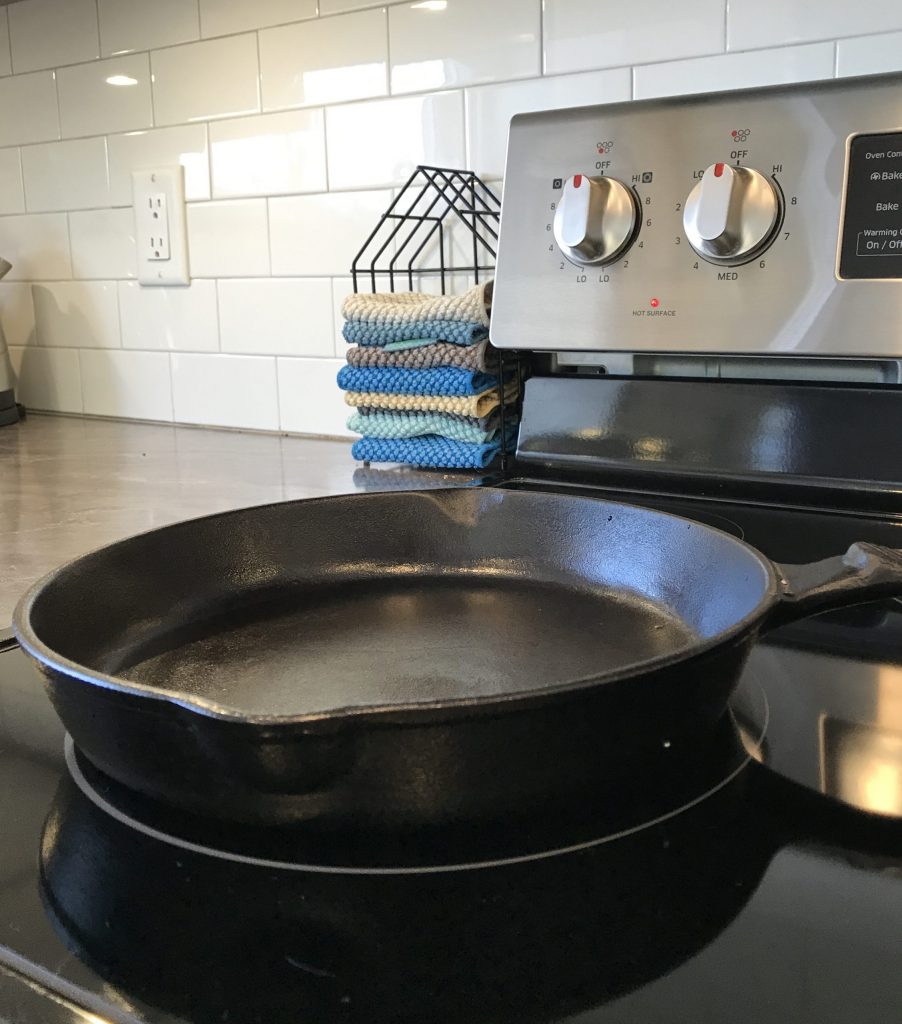
No need to fear the cast iron pan, my friends! This post will show you WHY you want to switch, HOW to care for them {easily}, as well as what Norwex product is a must have pairing with this product!
Why I Use Cast Iron Pans at Home
Healthier
These are healthier for two reasons:
- They contain no chemical coating that wears off. Once a non-stick surface coated in Teflon gets scratched, it eventually wears off, and we the user end up ingesting it. PFA’s in Teflon have gotten a bad rap for high toxicity. (Healthier non-stick versions without the toxic PFAs have been created, but they’re not as great of a non-stick product).
- Food cooked on Cast iron absorbs Iron, so it’s a simple way to add more iron to my diet! It’s not a significant amount, and the amount varies depending on the moisture content of the food, but hey – every little bit helps!
Can go from stovetop right into oven
If you’re cooking up an item that also needs to bake (like delicious mac and cheese), you can also put these in the oven, with no risk of high temperature issues of the pan or the handle.
Versatile
Use your cast iron pan for frying you dinner, cooking up eggs for breakfast, baking a brownie, and more. There is no limit to what this kitchen staple can do for you!
Easy to clean
Don’t believe what you hear that cast iron is high maintenance and too hard to clean. Lies! All of it! It is NOT hard. I’ll share more on cleaning and caring for further down in this post!
Non-Stick
Again, DON’T BELIEVE THE LIES that food stick on these. They are in fact a NON STICK surface, if you’re maintaining them correctly.
PRO TIP – The secret to making sure your eggs don’t stick: put a little coconut oil or avocado oil in the pan, heat on low-med heat, and let the oil heat. Then, add your egg. Don’t cook at too high a temperature, because that will lead to sticking. This is our go-to that ensures a perfectly fried egg that doesn’t stick to the pan!
Lasts.For.Ever.
If you’re a regular reader of this blog, then I know you love quality products that LAST (Norwex Superior Mop System owners raise the roooooooof!!!!). This means you’d also love a cast iron pan that will likely outlast YOU. These pans have drunk a life-giving elixr and just keep on going. You may have been privileged to receive your grandmother’s cast iron pan! And new cast iron pans don’t follow the ‘they don’t make ’em like they used to‘ adage. Even the new ones will last you past your last breath! It’s just the nature of the product.
Seasoning
A cast iron pan needs to be seasoned. This rule applies to a brand new cast iron pan, or an old, rusty (or poorly cared for) pan. Seasoning ensures a non-stick surface. If you research this topic, you will find people saying lots of different things. The best guide I found for seasoning a cast iron pan is the one from Ronny at Primal Gourmet. He covers EVERYTHING you need to know on the topic, and I have found that it his method has worked fabulous for me!
I don’t need to rewrite the book, so if you want tips on seasoning your new or old cast iron, make sure you check out his extensive blog post (there’s a video too!). And, if you love great step-by-step Instagram cooking stories, make sure you follow him @primal_gourmet.
Cleaning your Cast Iron Pan
You have two choices – clean with just water. Or clean with soap and water. There’s lots of debate on the internet over this. But there are two camps of people, and you get to choose which one to land in.
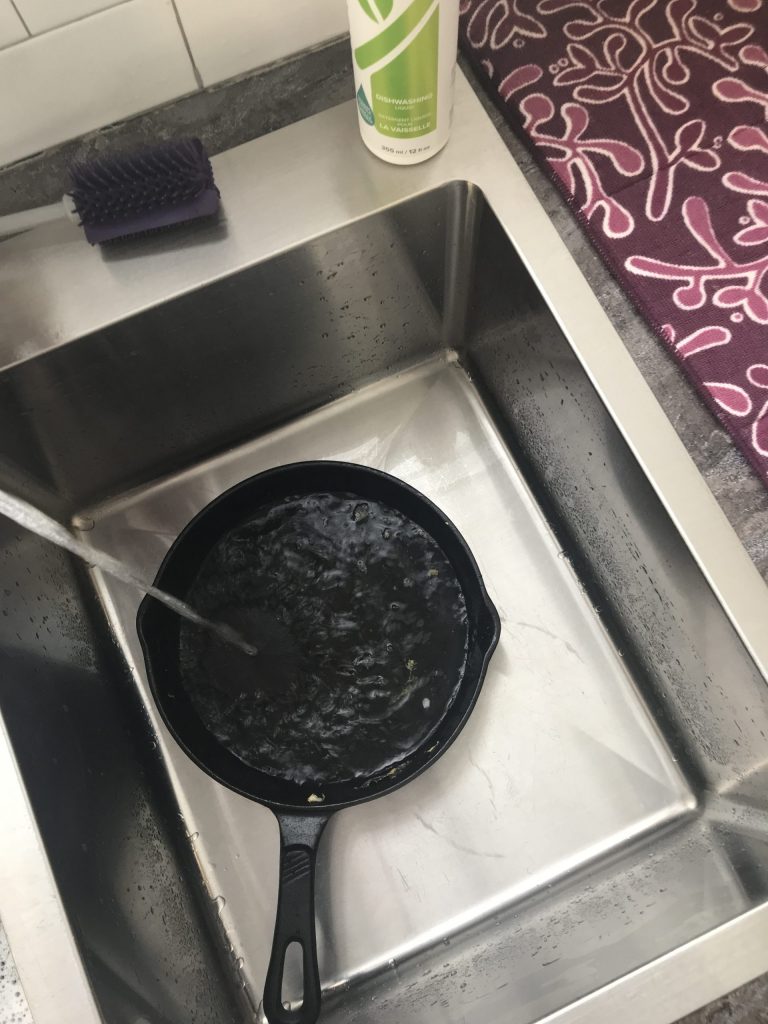
Now, WHAT tool do you use to clean the pan? There’s fancy sponges and even chain mail scrubbers out there as options. However, I have found that I don’t need any of that. The Norwex Dish Cloth is the only cloth I use to clean my cast iron pans. It removes everything I need.
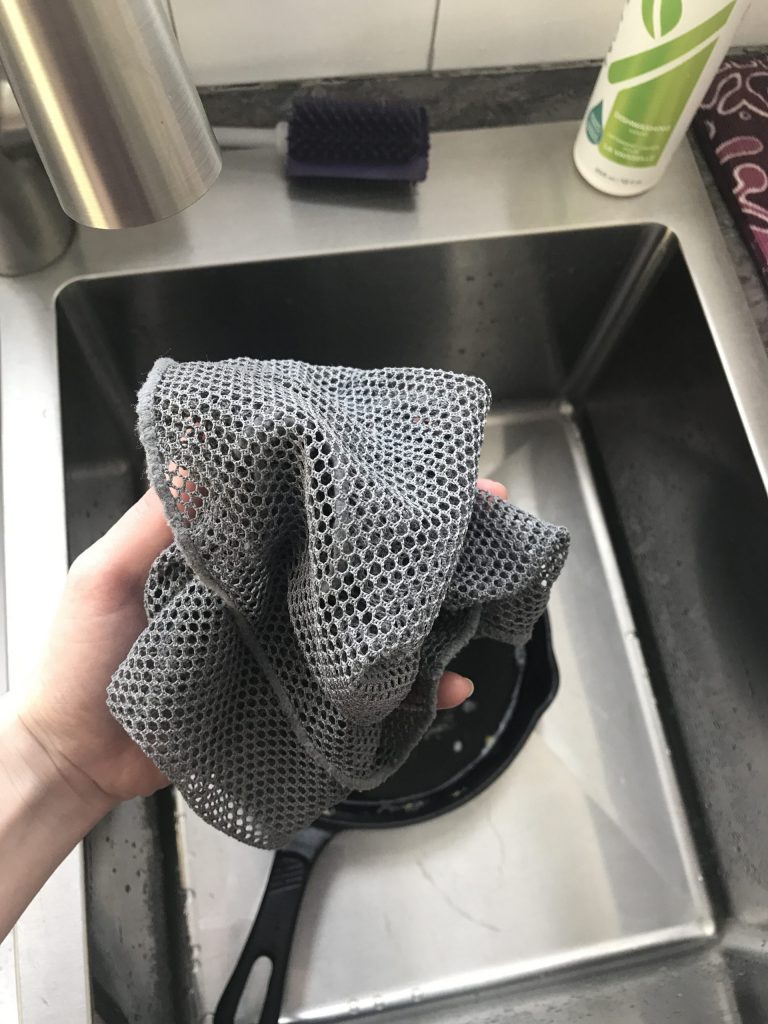
If there’s particularly bad build-up, there are four possible methods to clean it off:
- Fill your pan with water and let it soak 30 minutes. This will loosen the build up. Just be aware that letting soak in water too long (aka: overnight) is going to create possible rusting, that may require reseasoning.
- Sprinkle Kosher salt onto the pan, then add water and scrub with your Dish Cloth. This will add abrasion to your efforts, without being too harsh and scraping off your seasoning.
- Scrape buildup (particularly egg) with a Pampered Chef stoneware scraper. These little scrapers are intended for cleaning off their stoneware, but are handy tools for other kitchen dishes!
- For REALLY bad build-up, you can scrub with a Spirinett. It is RARE that you would need to do this, and if you do, rub lightly, as it can remove your seasoning layer if you scrub too hard.
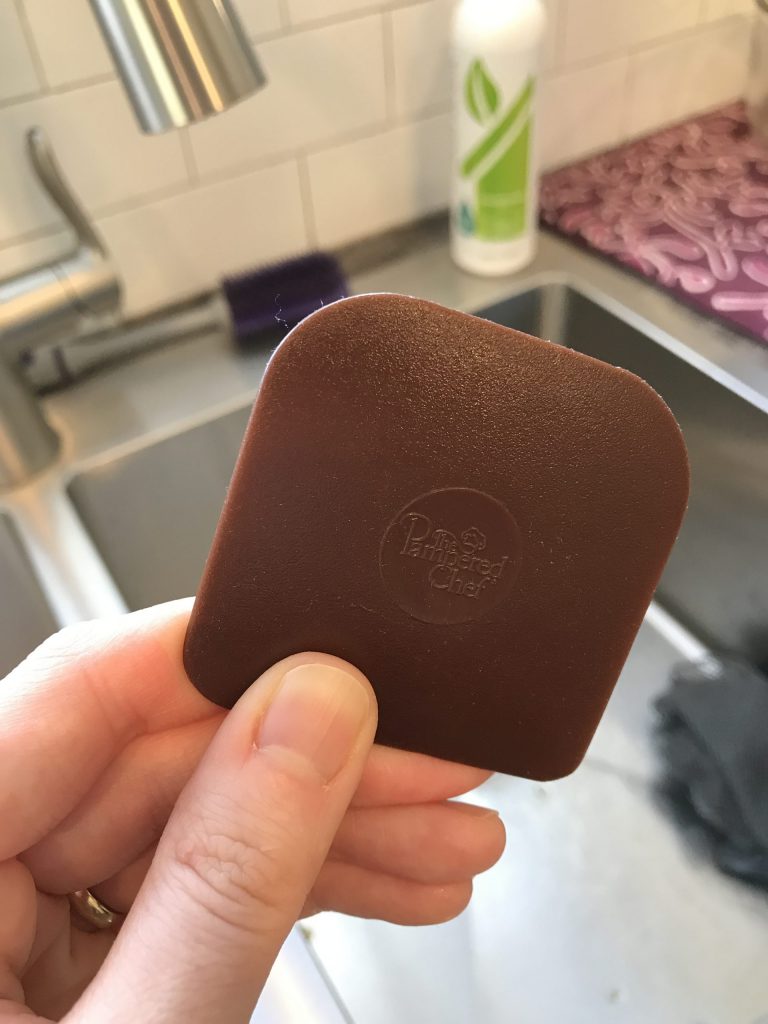
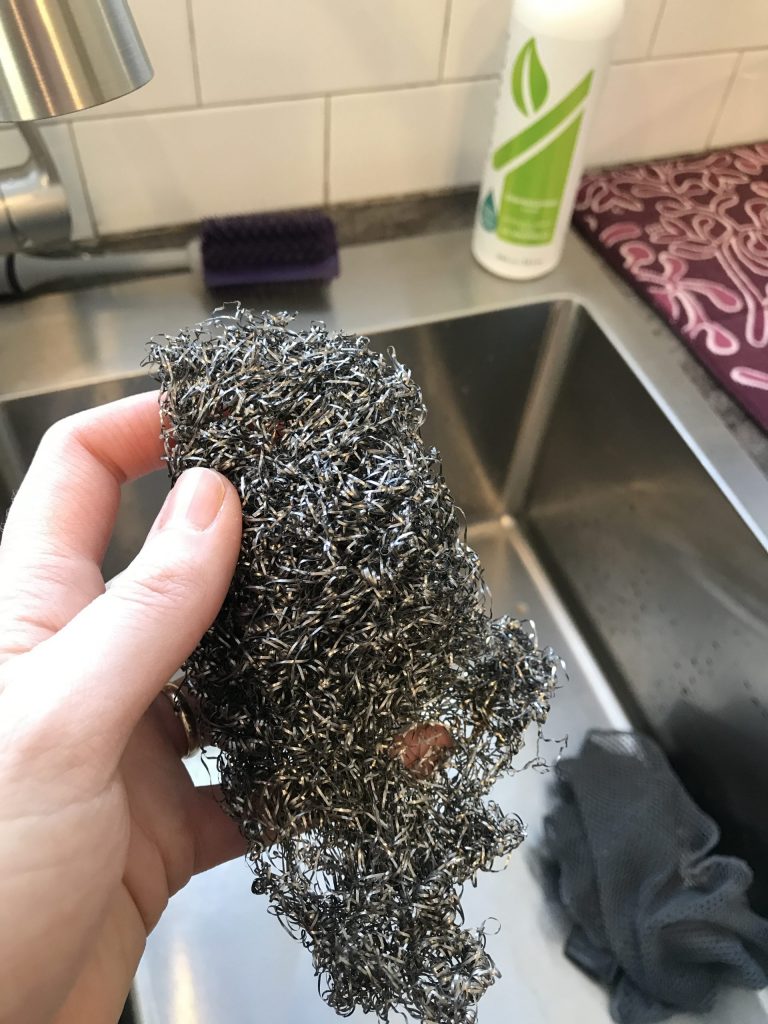
Drying
Put the pan this back on the stove, turn the burner to medium high heat, and heat until it the water has evaporated. It will take 3-5 minutes. Alternatively, you can stick it inside the oven and let it heat to 200-300 degrees until the water is evaporated.

Once your pan has cooled,
- Add a small amount of oil to the pan (vegetable oil, shortening or flax oil are options).
- Rub the oil into the pan with paper towel or a shop towel (including the bottom). Rub away any excess. You just want a thin layer.
This oiling process maintains your seasoning, and keeps it slick and ready for the next use. Some people heat the pan again after this oiling, to seal in the oil and prevent it from going rancid. However, I never bother with that step, since I use my pans almost everyday.
I hope that what I’ve shared has helped you feel brave enough to do the switch to Cast Iron pans in your kitchen. If you still have questions that weren’t covered here, please leave your question in the comments, and I’ll be happy to help! And make sure you head over to my shopping site to purchase a Norwex Dish Cloth to keep your cast iron pan clean!

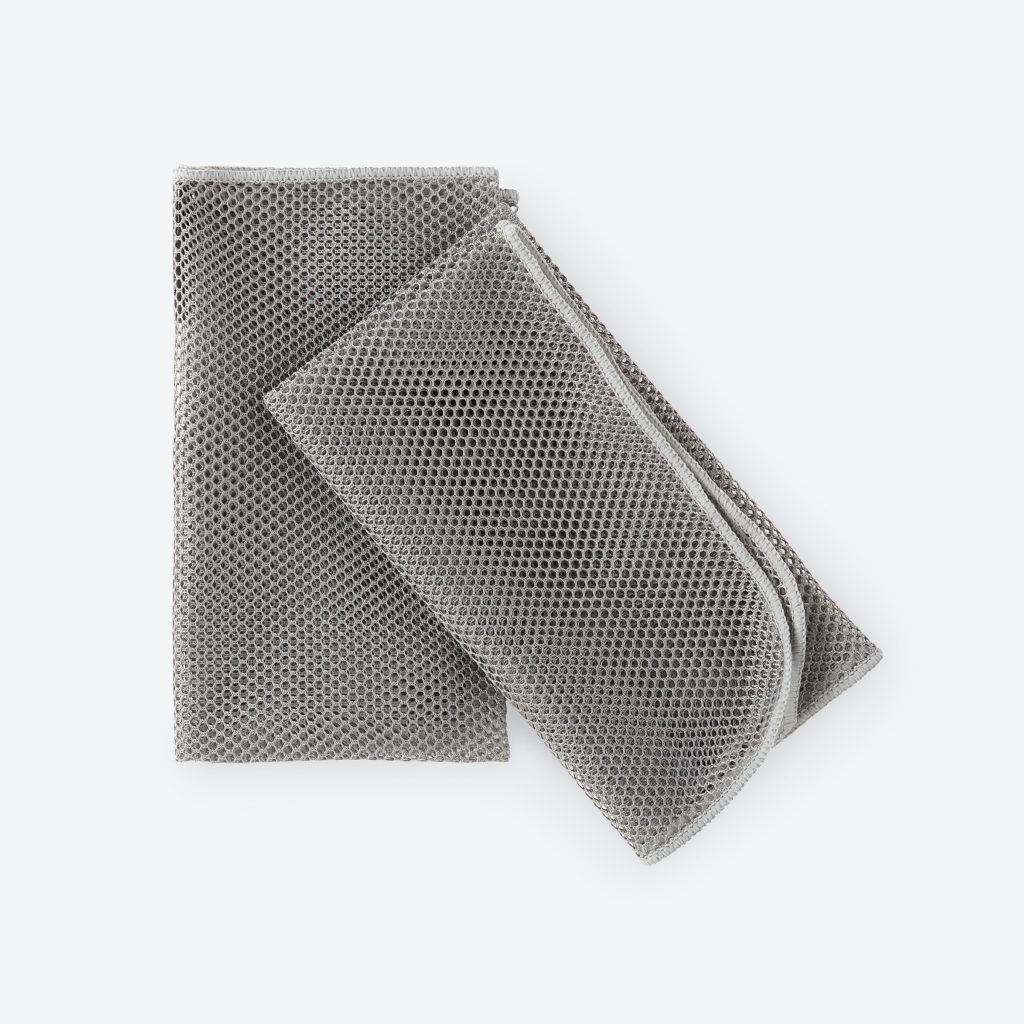
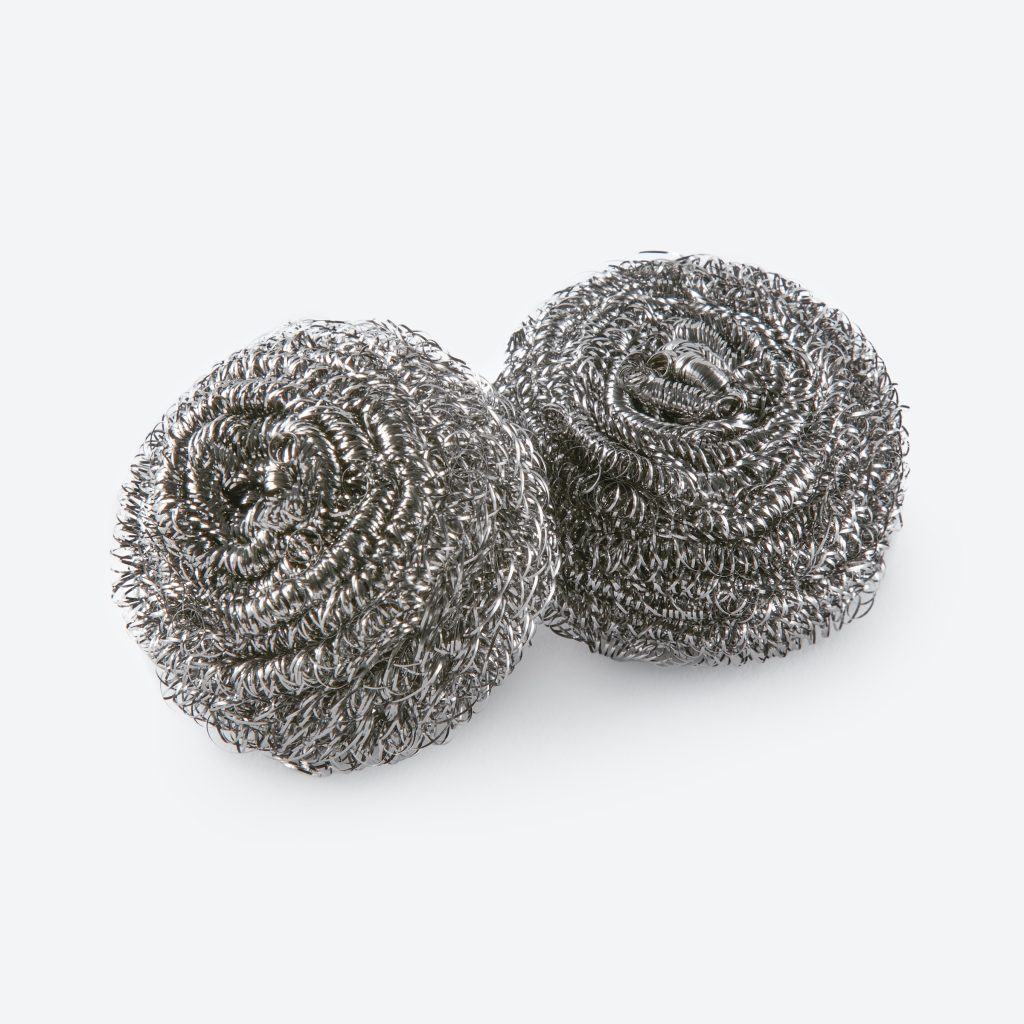
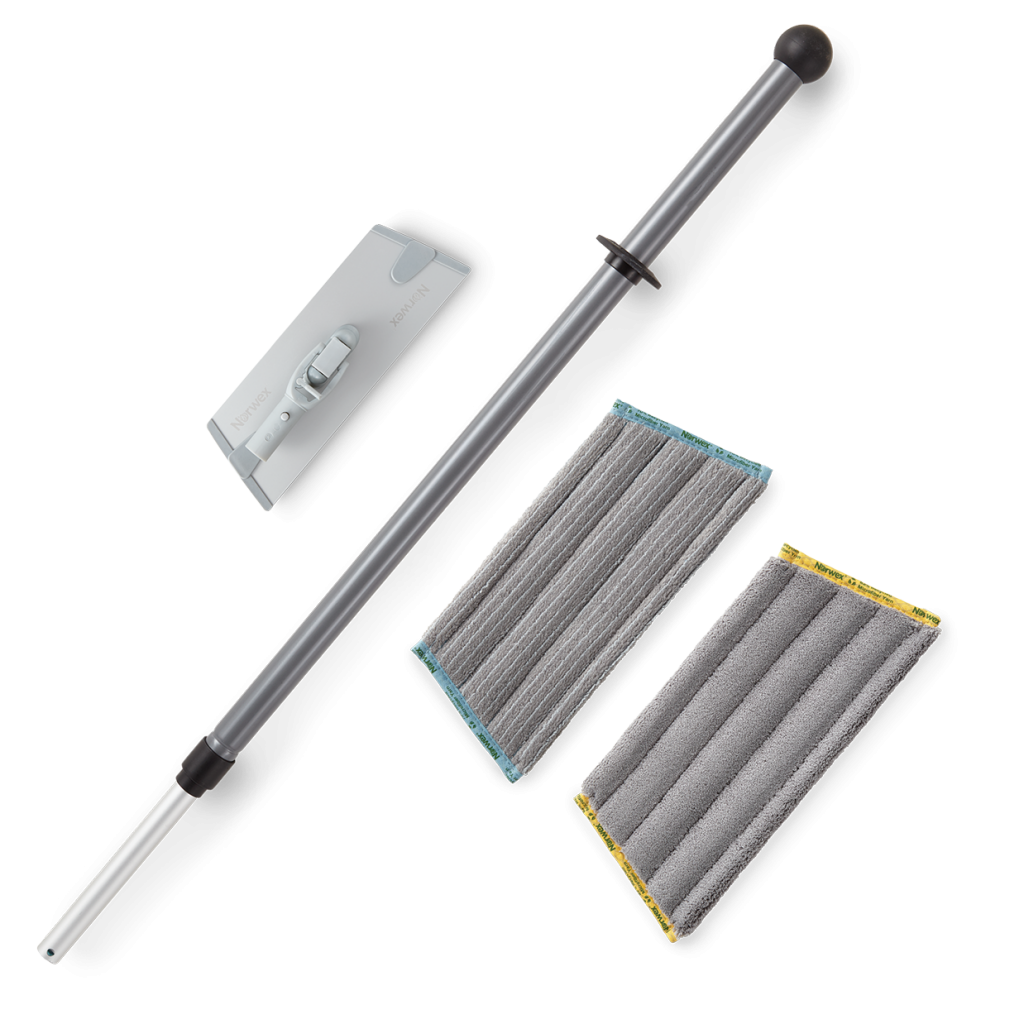


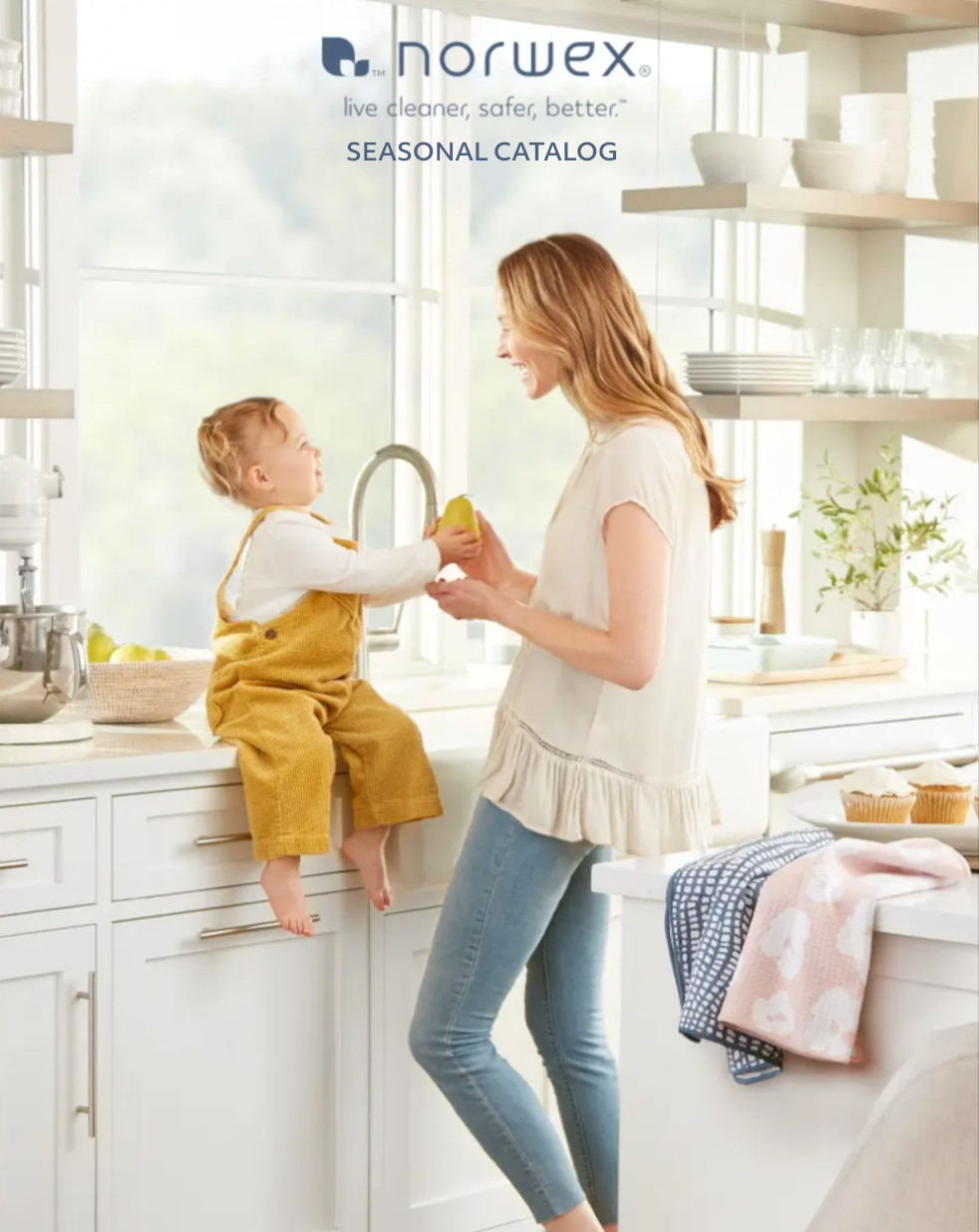
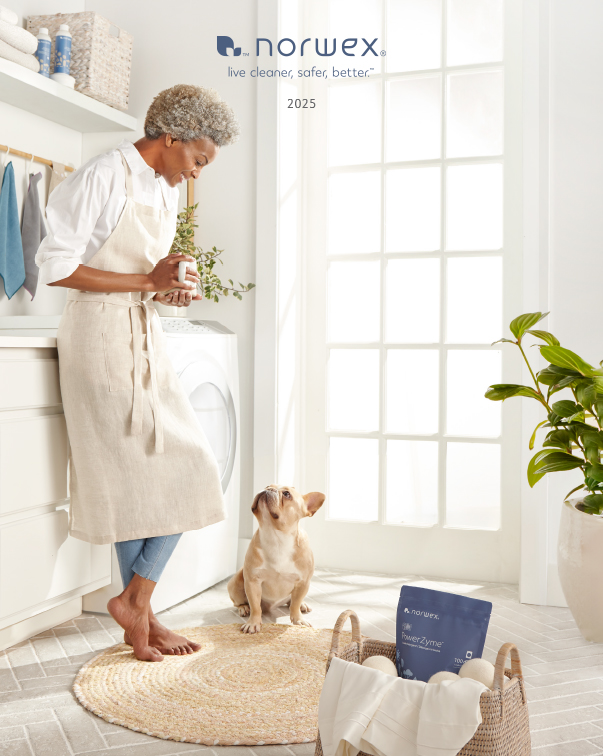
Thank you so much for this helpful post. I was wondering if the cleaning process described here removes the rust from the cast iron, or do you do something else to restore the pan if they have reached that point?